
Last Updated on
Even though a bow and an arrow constitute the most iconic pair in the world of archery, quiver deserves the right to turn their duo into a trio. After all, you can only shoot one arrow before you’ll need another one. A bow quiver is more than an arrow holder. It’s a full-fledged companion that keeps your arrows secure and close. There is no shooting happening without it, so it deserves equal attention as bows and arrows. In this article, we’ll discuss everything there is to discuss about quiver. They are responsible for several aspects of shooting and there are a number of types to choose from. We’ll cover all of them.
Table of Contents
The Role of a Bow Quiver in Archery
Different Types of Bow Quivers
Bow Quivers and Bow Types
Factors to Consider
Top Recommended Bow Quivers
Conclusion
FAQs
The Role of a Bow Quiver in Archery
Some might say that dedicating a whole passage to the role of quivers might be an overkill. While this piece of equipment has only one primary function, that in no way diminishes its value. After all, today quiver basks in the limelight, so a single ode isn’t too much, is it?
Enhancing Performance
One of the primary ways a quiver enhances an archer’s performance is by providing quick and easy access to arrows. The convenience of a bow quiver cannot be overstated. When you are in the middle of shooting, every second counts. Having to reach far or fumble for an arrow can disrupt focus and rhythm which is quite likely to interfere with your accuracy. A bow quiver keeps arrows close at hand, allowing you to prepare for another shot in the blink of an eye.
If a bow is constructed to be mounted on a bow, it may also contribute to its balance. Some quivers are designed to distribute the weight of the arrows evenly, helping to maintain the balance of the bow. This balance can help with stability during aiming and shooting, which is also quite beneficial.
Furthermore, modern bow quivers are often designed with additional features for increased convenience. For instance, some have compartments for storing small items like tools, spare parts, or personal belongings. Others have adjustable straps for better fit and comfort.
Lastly, there are stealth benefits, given a bow is designed accordingly. In hunting situations, silence is often key. A good bow quiver prevents arrows from rattling around and creating noise that could scare your prey off.
Historical Context
A quiver is by no means a modern invention. The earliest known quivers were discovered in the tomb of Tutankhamun, an Egyptian pharaoh from the 14th century BC. These early quivers were simple containers made of leather or similar materials.
Over the centuries, quiver designs have evolved to meet the changing needs and technologies of archery. The bow quiver as we know it today, which attaches directly to the bow, was not widely used until the 20th century.
Different Types of Bow Quivers
Quivers come in various shapes, sizes, and designs, each tailored to cater to the unique needs of archers. Let’s delve into the different types of quivers and their specific characteristics.
Detachable Bow Quivers
Detachable bow quivers are designed to be attached directly to the bow but can be easily removed when not needed. This feature makes such quivers extremely versatile. The design of these quivers allows them to hold the arrows close to the bow, reducing the movement needed to load an arrow. With little effort needed for drawing, you can channel the rest of it to land a precise shot. Detachable bow quivers are also good at keeping the arrows organized, but can’t accommodate as many arrows as other types.
Bow Mounted Quivers
Bow-mounted quivers share many similarities with detachable bow quivers. They are attached directly to the bow, keeping your arrows immediately accessible. However, unlike detachable quivers, they are much more difficult to unmount. They are usually attached with the help of screws and bolts. Though bow-mounted quivers aren’t permanently attached, taking them off requires some time. In all other respects, they are every bit as comfortable as detachable ones, only attached more securely.
Back Quivers
Back quivers offer a different approach to carrying arrows, a traditional one. They are worn over the shoulder, with the arrows resting on your back. This setup allows for a larger capacity of arrows, making back quivers an excellent choice for long practice sessions or hunting trips. During walking, such quivers shift very slightly, if at all, which is another great benefit.
However, drawing an arrow from a back quiver requires more movement than with bow-mounted options, which may not be ideal in situations where stealth or speed is crucial. Such quivers often don’t have additional arrow retention means, and thus the arrows are likely to fall out should you bend over.
Hip Quivers
Hip quivers, as the name suggests, are usually worn either off the hip or to the side of it. Also known as side quivers, they offer quick access to the arrows without adding weight to the bow.
Hip quivers offer a blend of convenience and mobility. Some hip quivers also come with additional pockets or compartments for storing tools or personal items. They are also designed in such a way that arrows lean backward to preclude excessive arm contact. However, they can still sway back and forth during walking.
Ground Quivers
Ground quivers are designed to be placed on the ground rather than carried on the body or attached to the bow. This setup makes them an excellent option for stationary shooting, such as target practice, when the speed of drawing is irrelevant.
Ground quivers can hold a large number of arrows, making them ideal for extended practice sessions. However, they are not portable and therefore not suitable for hunting or moving targets.
Bow Quivers and Bow Types
Since there are several types of quivers, they must all be good at different things. This means that some might be more suitable for your particular purpose than others. Choosing the most suitable quiver depends on several aspects, but let’s first turn to the type of bow itself.
Compound Bow Quiver
Compound bows are designed for power and accuracy. It’s hard to say whether compound bows are more popular than recurve ones, but they certainly have a lot of accessories. For example, detachable or bow-mounted quivers were made specifically for compound bows. So it’s not surprising that they are considered to be some of the best choices.
Recurve Bow Quiver
Recurve bows are typically lighter, so a heavy quiver might throw off the balance. A lightweight quiver that doesn’t interfere with the bow’s natural curve is best. As such, you might want to opt for back or hip quivers because of their mobility and ease of use.
Factors to Consider When Choosing a Bow Quiver
Now, let’s get to other aspects that matter. While the type of bow outlines the circle of potential candidates, it should never be the only criterion that informs your decision.
Your Archery Style
The first thing to consider is your style of archery. Are you a target archer, practicing at a range with stationary targets and fixed distances? Or are you a hunter, moving through different terrains and shooting at varying distances?
For target archers, ground quivers can be a great choice as they allow you to focus on your shot without worrying about carrying your arrows or maintaining balance with a quiver full of arrows attached to a bow. Hunters and field archers, on the other hand, might prefer bow-mounted and hip quivers that offer more mobility and easier access to arrows. Back quivers are another option, but you should be careful not to flip the quiver when examining tracks, lest all the arrows fall out.
Your Type of Shooting
Your type of shooting also plays a significant role in choosing a quiver. If you need to shoot quickly, like in hunting situations, you’ll want a quiver that allows for fast and easy access to your arrows. Bow-mounted or detachable quivers would be suitable in this case.
If you’re shooting over longer periods, such as during extended practice sessions or competitions, comfort should be a priority. Back or hip quivers, which distribute the weight across your body, might be more appropriate.
The Number of Arrows
Consider how many arrows you typically carry during a shooting session. If you’re a hunter who only needs a few arrows, a smaller, lightweight quiver may suffice. But if you’re a target archer who shoots dozens of arrows in a session, you’ll need a quiver with a larger capacity, like a back quiver or a large ground quiver.
The Size of Arrows
The size of your arrows is another important consideration. If you use longer or larger-diameter arrows, you’ll need a quiver that can accommodate them. They also should interfere with your body or equipment, so we rule out hip quivers right away. The rest depends on all the factors we’ve mentioned above.
Design and Aesthetics
While functionality should be your main concern when choosing a quiver, design and aesthetics are also worth considering. After all, archery isn’t just a sport – it’s a passion, and it’s only natural to want equipment that reflects your personal style.
Look for a quiver that not only meets your practical needs but also appeals to your taste. Back quivers, especially traditional leather ones, come in a variety of forms and patterns. However, a modern-looking quiver with sleek lines also tickles the fancy of many archers. Whatever you choose, there’s a wide range of options available on the market.
Top Recommended Bow Quivers
Each of these quivers has its pros and cons, and their prices vary as well. It’s important to compare these factors against your personal needs and preferences to find the best fit for you.
Truglo Tuff-Loc 4-Arrow Black Quiver
The TRUGLO Tuff-Loc 4-Arrow Black Quiver is an impressive piece of archery equipment that can boast two merits: functionality and durability. Despite its small size, the quiver can comfortably hold four arrows, making it a practical choice for hunters who prefer to travel light.
One of the distinguishing features of the Tuff-Loc quiver is its robust, vibration-free construction. As the name suggests, this quiver is built to endure. Made of high-impact-resistant composite material, it can withstand the rigors of outdoor use.
But the Tuff-Loc isn’t just about toughness; it also offers convenience. It features a quick-release cam lock that allows for easy removal with one hand. This allows for smooth and fast detachment when you need to take your shot, and who wouldn’t want that? The mounting bracket of the Tuff-Loc is also adjustable and can be moved to fit different bow sizes.
TightSpot Quiver Rise 5 Arrow Lite Black
The TightSpot Quiver Rise 5 Arrow Lite Black is an exceptional quiver that seamlessly marries functionality, convenience and style.
Designed specifically with treestand hunters in mind, this compact 5-arrow quiver is all about maneuverability. Its ultra-compact design ensures that it fits tight to your bow, virtually eliminating any torque.
Another standout feature is its innovative design that addresses many of the common challenges associated with traditional quivers. The Quick Draw arrow system, for example, places your arrow within easy reach for a quick second shot.
The TightSpot Quiver also features an included second gripper and a loop on the hood, allowing for easy hanging in the tree. These thoughtful touches enhance its usability, making it an even more appealing choice for hunters.
Aesthetically, the quiver is no eye-candy but there is a certain charm to its reserved design. Its black finish gives it a modern, polished look that’s sure to appeal to archers who appreciate simplicity in their equipment.
G5 OUTDOORS Head-Loc Black 6 Arrow Quiver
The G5 Outdoors Head-Loc Black 6 Arrow Quiver is an innovative and reliable piece of archery equipment that combines functionality, convenience and style.
This quiver is capable of comfortably accommodating six arrows. You might not use all of them during your hunt, but it’s nice to know you always have a spare one just in case.
One of the defining features of this quiver is its unique and adjustable Head-Loc mounting system. It allows the quiver to sit close to the bow, improving shot balance and reducing the chances of catching branches while walking in the woods (which is quite a common occurrence in the wilderness.). It also includes a free tree mount, enhancing its usability in various outdoor settings.
The G5 Head-Loc quiver also boasts an Exo-Flex hood. This innovative design reduces noise and vibration, making it an excellent choice for hunters who value discretion and stealth. Another noteworthy feature is its arrow release mechanism. The first arrow can be pulled straight back for release instead of reaching around the side.
Conclusion
Quivers are often eclipsed by the grandeur of bows, but that doesn’t diminish their importance in any way. Choosing a quiver that will suit you the most comprises accounting for a wide range of factors, all of which we’ve covered. Always remember that the best quiver is one that feels like an extension of you. As you embark on your journey to find the perfect bow quiver, consider the factors we’ve discussed, and don’t rush the process.
Read: 5 Best Compound Bow Sights
FAQs
What are the different types of bow quivers?
There are several types of bow quivers including hip quivers, back quivers, bow-mounted quivers and ground quivers. Each type has its own advantages and is suited to different styles of archery.
How do I choose the right bow quiver for my needs?
Choosing the right bow quiver depends on your specific needs and style of archery. For instance, bow-mounted quivers are great for hunters as they allow for quick arrow retrieval, while back quivers might be preferred by target archers for their larger capacity.
What factors should I consider when buying a bow quiver?
When buying a bow quiver, consider factors such as capacity, material, type, and ease of use. You should also consider how the quiver attaches to your body or bow, and whether it’s comfortable and secure.

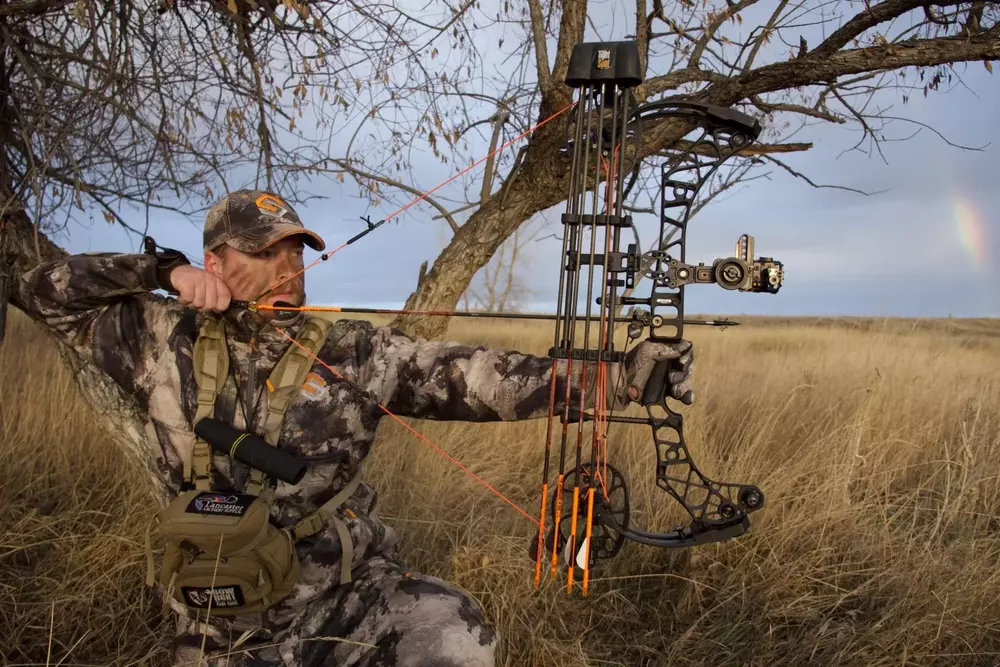
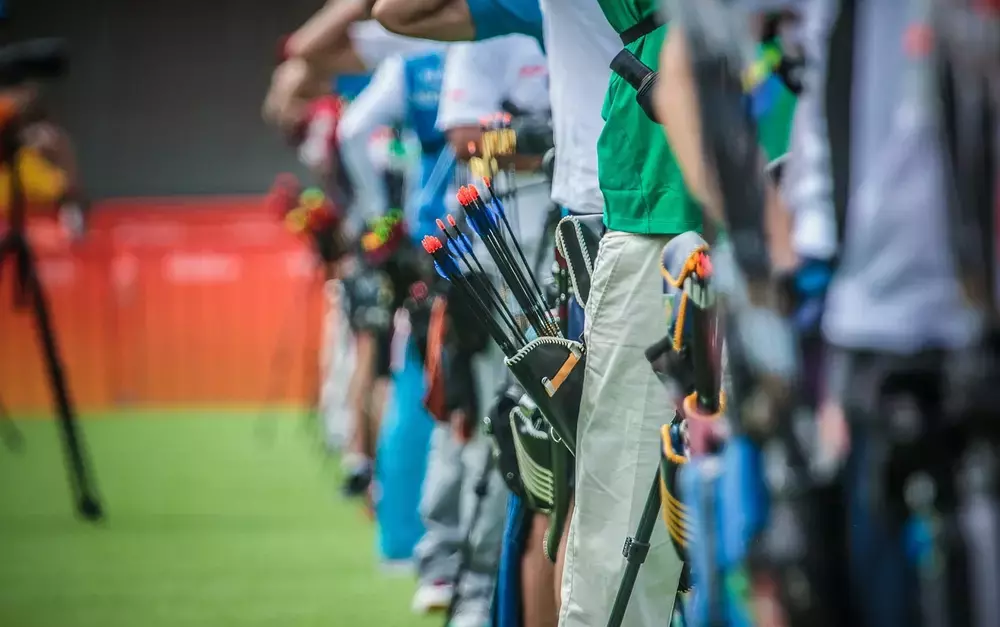
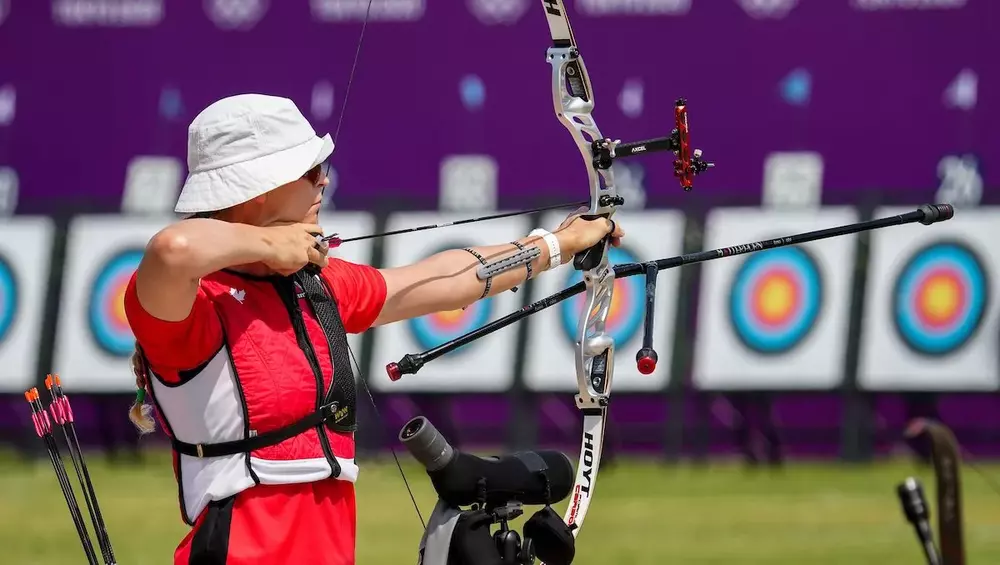
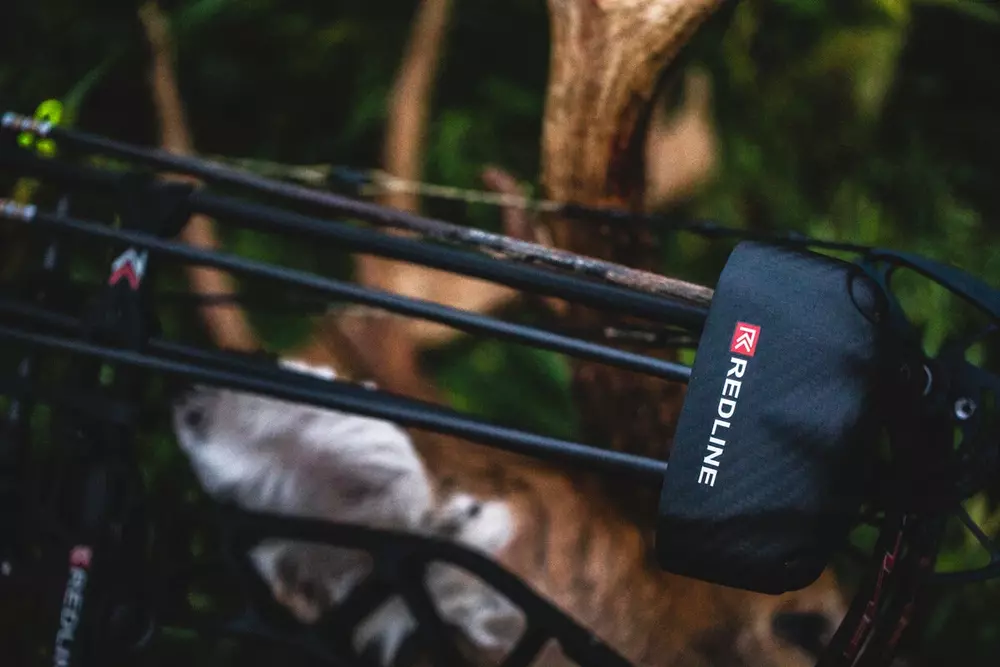
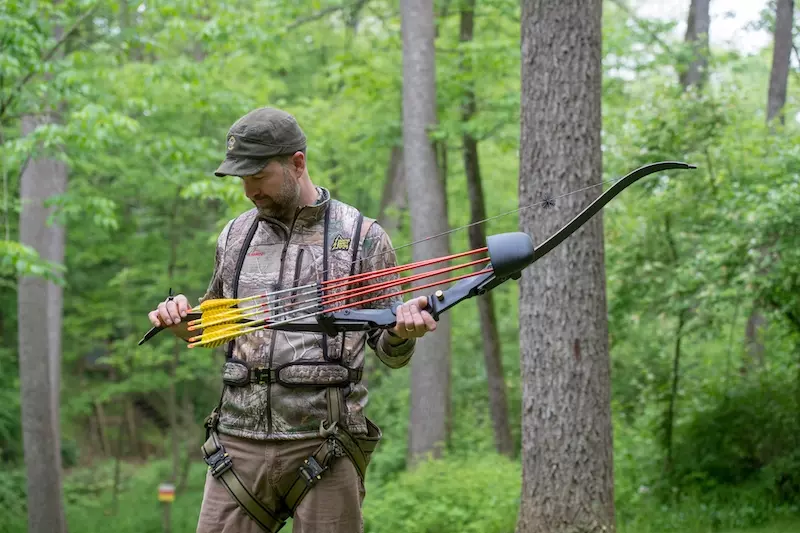



Leave a Reply